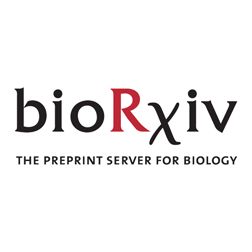
Genomic and metatranscriptomic analyses reveal an active microbial hydrocarbon cycle in the photic zone | bioRxiv https://www.biorxiv.org/content/10.1101/2025.10.24.684404v1?rss=1
25.10.2025 02:44 — 👍 2 🔁 0 💬 0 📌 0@pacyc184.bsky.social
Microorganisms and Viruses in the ocean https://sites.google.com/view/kentotominaga/

Genomic and metatranscriptomic analyses reveal an active microbial hydrocarbon cycle in the photic zone | bioRxiv https://www.biorxiv.org/content/10.1101/2025.10.24.684404v1?rss=1
25.10.2025 02:44 — 👍 2 🔁 0 💬 0 📌 0
A Comparative Analysis: Molecular Mechanisms of Carbon Catabolite Repression in Bacteria | Annual Reviews https://www.annualreviews.org/content/journals/10.1146/annurev-micro-050624-031622?TRACK=RSS
24.10.2025 07:24 — 👍 0 🔁 0 💬 0 📌 0
Integrating theory and machine learning to reveal determinants of plasmid copy number | bioRxiv https://www.biorxiv.org/content/10.1101/2025.10.23.684078v1?rss=1
24.10.2025 07:22 — 👍 0 🔁 0 💬 0 📌 0
Optimizing methods for virome analysis based on studies of a synthetic viral community | bioRxiv https://www.biorxiv.org/content/10.1101/2025.10.23.683462v1?rss=1
24.10.2025 07:20 — 👍 1 🔁 0 💬 0 📌 0
Escherichia coli with a 57-codon genetic code | Science https://www.science.org/doi/full/10.1126/science.ady4368?af=R
24.10.2025 00:07 — 👍 0 🔁 0 💬 0 📌 0
ParaRef: a decontaminated reference database for parasite detection in ancient and modern metagenomic datasets | Genome Biology | Full Text https://genomebiology.biomedcentral.com/articles/10.1186/s13059-025-03818-w
24.10.2025 00:02 — 👍 2 🔁 0 💬 0 📌 0
Pan-modification profiling facilitates a cross-evolutionary dissection of the thermoregulated ribosomal epitranscriptome - ScienceDirect https://www.sciencedirect.com/science/article/pii/S0092867425010827?dgcid=rss_sd_all
23.10.2025 23:51 — 👍 0 🔁 0 💬 0 📌 0
New retron systems from environmental bacteria identify triggers of anti-phage defense and expand tools for genome editing | PLOS Biology https://journals.plos.org/plosbiology/article?id=10.1371/journal.pbio.3003042
23.10.2025 23:50 — 👍 6 🔁 3 💬 0 📌 0AI protein design for everyone.
evedesign https://evedesign.bio/

Acetone-mediated ammonium oxidation to dinitrogen by Zobellella taiwanensis bacteria | The ISME Journal | Oxford Academic https://academic.oup.com/ismej/advance-article/doi/10.1093/ismejo/wraf230/8296948?rss=1&login=false
23.10.2025 06:03 — 👍 0 🔁 0 💬 0 📌 0Comparison of the Fecal Microbiota from Long-term Captive and Newly Captured Whale Sharks (<i>Rhincodon typus</i>) https://www.jstage.jst.go.jp/article/jsme2/40/3/40_ME25023/_article/-char/ja/
22.10.2025 23:15 — 👍 0 🔁 0 💬 0 📌 0
Non-conjugative plasmids limit their mobility to persist in nature: Cell Reports https://www.cell.com/cell-reports/fulltext/S2211-1247(25)01227-6?rss=yes
22.10.2025 22:52 — 👍 2 🔁 0 💬 0 📌 0
Phage evolutionary relationships emerge from protein language model-based proteome representation | NAR Genomics and Bioinformatics | Oxford Academic https://academic.oup.com/nargab/article/7/4/lqaf134/8296763?login=true
22.10.2025 22:50 — 👍 1 🔁 0 💬 0 📌 0
GTDB release 10: a complete and systematic taxonomy for 715 230 bacterial and 17 245 archaeal genomes | Nucleic Acids Research | Oxford Academic https://academic.oup.com/nar/advance-article/doi/10.1093/nar/gkaf1040/8296754?rss=1&login=true
22.10.2025 22:50 — 👍 3 🔁 1 💬 0 📌 0
Physiological diversity and adaptation of Rhizaria revealed by phylogenomics and comparative transcriptomics | bioRxiv https://www.biorxiv.org/content/10.1101/2025.10.20.683504v1?rss=1
22.10.2025 22:33 — 👍 1 🔁 0 💬 0 📌 0
Serial innovations by Asgard archaea shaped the DNA replication machinery of the early eukaryotic ancestor | Nature Ecology & Evolution https://www.nature.com/articles/s41559-025-02882-6
22.10.2025 05:34 — 👍 1 🔁 0 💬 0 📌 0
Phages use contingency loci as a bet-hedging strategy | bioRxiv https://www.biorxiv.org/content/10.1101/2025.10.21.683753v1
22.10.2025 03:40 — 👍 1 🔁 0 💬 0 📌 0
Activity-targeted metaproteomics uncovers rare syntrophic bacteria central to anaerobic community metabolism | Nature Microbiology https://www.nature.com/articles/s41564-025-02146-w
21.10.2025 23:44 — 👍 1 🔁 0 💬 0 📌 0
SmallBARNA 2026: a kingdom-wide bacterial sRNA resource | Nucleic Acids Research | Oxford Academic https://academic.oup.com/nar/advance-article/doi/10.1093/nar/gkaf999/8294348?rss=1&login=true
21.10.2025 23:31 — 👍 0 🔁 0 💬 0 📌 0
Cryo-EM Structures of Methanogenic Schizorhodopsins Reveal Divergent Strategies for Proton Transport and Thermal Adaptation | bioRxiv https://www.biorxiv.org/content/10.1101/2025.10.20.683367v1
21.10.2025 23:30 — 👍 1 🔁 0 💬 0 📌 0
Declining ocean greenness and phytoplankton blooms in low to mid-latitudes under a warming climate | Science Advances https://www.science.org/doi/full/10.1126/sciadv.adx4857?af=R
21.10.2025 05:12 — 👍 0 🔁 0 💬 0 📌 0
Phylogenetic and functional characterization of Asgard primases | bioRxiv https://www.biorxiv.org/content/10.1101/2025.10.19.683342v1?rss=1
21.10.2025 00:48 — 👍 0 🔁 0 💬 0 📌 0
RNA viruses in water shape the viromes of shrimp and fish in aquaculture systems | bioRxiv https://www.biorxiv.org/content/10.1101/2025.10.19.683331v1?rss=1
21.10.2025 00:48 — 👍 1 🔁 0 💬 0 📌 0
Structural phylogenetics unravels the evolutionary diversification of communication systems in gram-positive bacteria and their viruses | Nature Structural & Molecular Biology https://www.nature.com/articles/s41594-025-01649-8
17.10.2025 10:46 — 👍 3 🔁 1 💬 0 📌 0
Clear niche partitioning of nitrite-oxidizing bacteria from the bottom and the slope of Mariana Trench | Microbiome | Full Text https://microbiomejournal.biomedcentral.com/articles/10.1186/s40168-025-02192-w
16.10.2025 22:54 — 👍 1 🔁 0 💬 0 📌 0
Multi-environment deep mutational scanning reveals the distribution of temperature-sensitive variants in a bacterial kinase: Cell Reports https://www.cell.com/cell-reports/fulltext/S2211-1247(25)01217-3?rss=yes
16.10.2025 22:53 — 👍 1 🔁 0 💬 0 📌 0
Defensive fungal symbiosis on insect hindlegs | Science https://www.science.org/doi/10.1126/science.adp6699
16.10.2025 22:50 — 👍 1 🔁 0 💬 0 📌 0
Microbial hydrocarbon degradation potential of the Baltic Sea ecosystem | Microbiome | Full Text https://microbiomejournal.biomedcentral.com/articles/10.1186/s40168-025-02211-w
16.10.2025 07:13 — 👍 1 🔁 0 💬 0 📌 0
IDBac: an open-access web platform and compendium for the identification of bacteria by MALDI-TOF mass spectrometry. | bioRxiv https://www.biorxiv.org/content/10.1101/2025.10.15.682631v1
16.10.2025 02:25 — 👍 1 🔁 0 💬 0 📌 0
GhostFold: Accurate protein structure prediction using structure-constrained synthetic coevolutionary signals | bioRxiv https://www.biorxiv.org/content/10.1101/2025.10.13.682177v1?rss=1
16.10.2025 00:15 — 👍 1 🔁 0 💬 0 📌 0